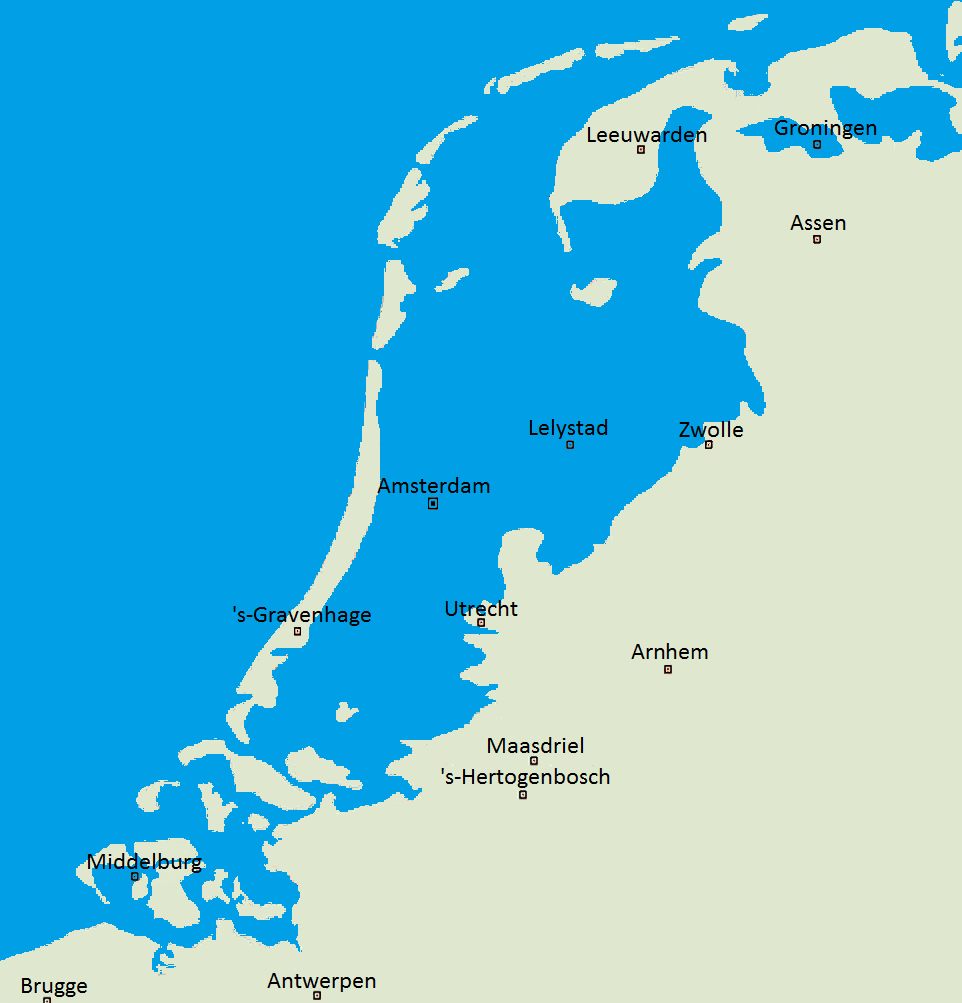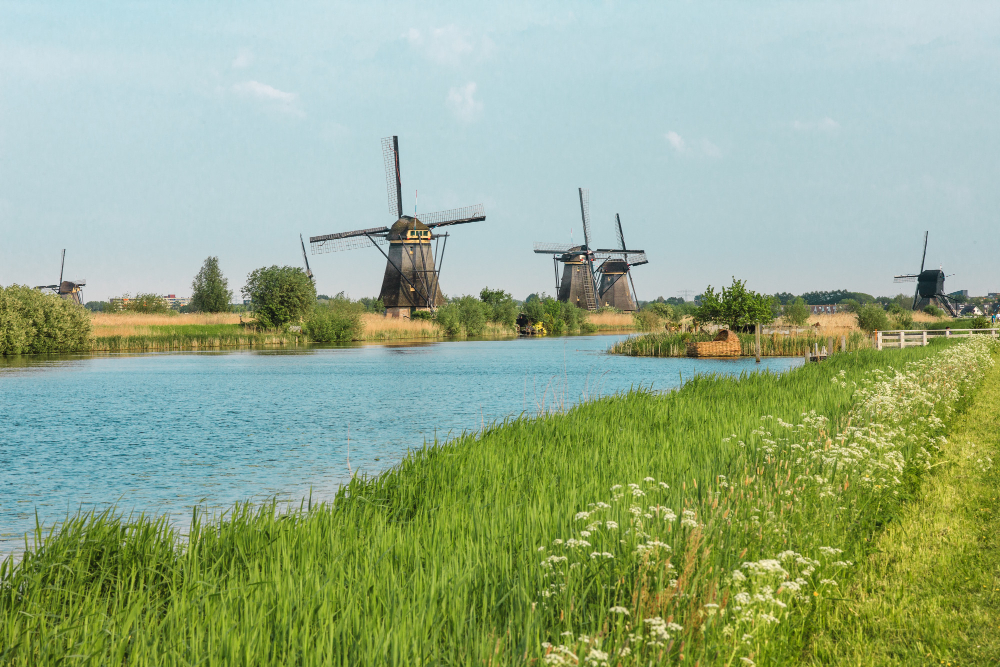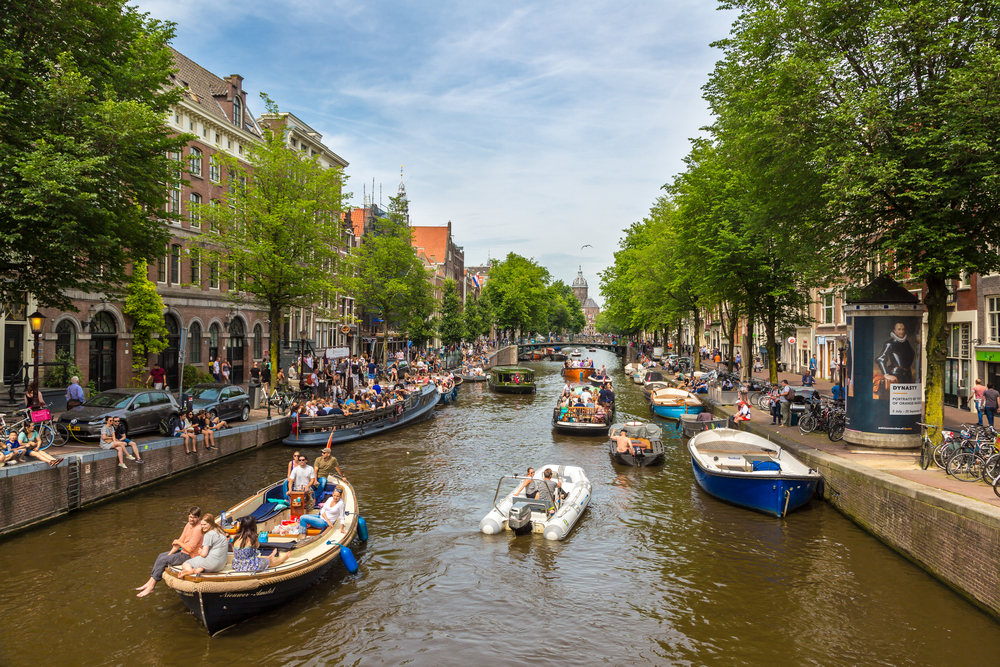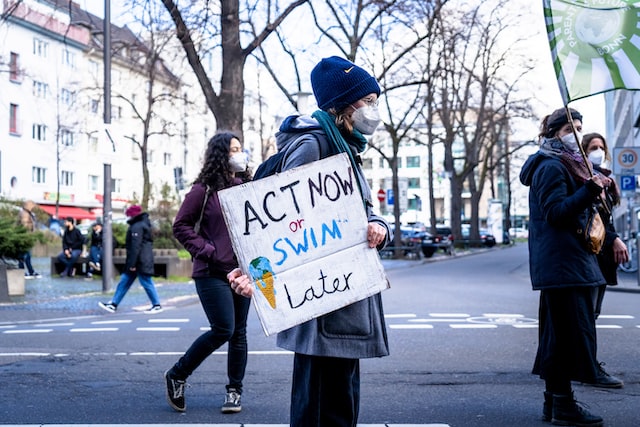The Netherlands literally means “low country” and for good reason too: only about 50% of the country sits above sea level, while the lowest part of Holland is a whopping 6.7 metres below it.
But what do you do when you live in a sinking country? Well, you build anyway! But you build innovatively with canals, dikes, walls, and dunes.
The Dutch versus the sea
There is an old Dutch adage that goes, “while God created the Earth, the Dutch created the Netherlands.” Dutchies essentially built their country on top of the ocean through a variety of hydro-engineering techniques.
The Dutch were so effective at doing so that they are deemed to be leading experts on water management and engineering. Many other cities around the world now consult Dutch firms for advice on climate change and city building.
Here is a quick summary of how the Dutch actually built their cities on the sea.

Technique number one: building a wall
The Dutch built walls around a body of water they wanted to turn into land. Once this wall was in place, they would erect windmills next to the wall and would utilise the spin of the windmill to pump the water out of the land to dry it up.

Technique number two: the Afsluitdijk 1932 win
In 1932 the Dutch separated the North Sea just below the Dutch islands by building a giant dike. Not quite sure what a dike is? Well, simply put, it’s a barrier erected to regulate or hold back water. This barrier stretches over 32 kilometres and created a lake on the other side!
The map below compares the Netherlands before and after 1932, when the Afsluitdijk dike was built between Noord Holland and Friesland. You can clearly see the barrier that the Dutch built to keep the North Sea out.
‘God created the world, but the Dutch created The Netherlands’. This map shows the land reclamation in The Netherlands. Source: https://t.co/QNfRuZXFD1 pic.twitter.com/Yu6Z90teve
— Simon Kuestenmacher (@simongerman600) September 18, 2019
Cities built on top of the lake
After the lake was created, the Dutch began building cities on top of it. This resulted in the establishment of an entire reclaimed province named Flevoland.

Going the extra mile
The Dutch didn’t stop there, however. They decided to go the extra mile and prettify the dike by lighting up the “Afsluitdijk” gates in the dark with each passing car.
READ MORE | Why does it rain so much in the Netherlands?
Daan Roosegaarde, who designed the project for the Dutch government, said: “The Afsluitdijk stands for a piece of Dutch courage and innovation. By adding a subtle layer of light and interaction we’ve strengthened the beauty of the dike and created a new connection between man and landscape, dark and light, poetry and practicality.”
Technique number three: canals
The Dutch created many canals which helped control the water flow from their reclaimed land.
For example, in Amsterdam, the canals serve as both a moat and a dam for the Amstel River on which the city sits next. Amsterdam has three main canals (Herengracht, Prinsengracht, and Keizersgracht) that form a circular canal belt around the city.

These were built in the 17th century, also known as the Dutch Golden Age. The land that was dug up in the process was then used to create a barrier for the streets where houses were built.
The Dutch also made their cities very accessible by boat and that is why Amsterdam is colloquially known as the “Venice of the north”.
But the Dutch aren’t perfect…
A lot of the time we sit back and read about Dutch ingenuity with awe. But no nation is perfect, especially when you have to contend with sinking land.
In 2002, construction started on the Amsterdam Zuid-Noord metro line. It was completed but it quickly became evident that Amsterdam’s precarious historical underground was less than a stable foundation for the new metro line. The result? Houses built above it literally began to fall into the earth.
READ MORE | How do the Dutch feel about climate change?
Residents were forced from their homes, and even after the line opened ten years later, most of the buildings were still empty. This was a massive Dutch fail!
The challenges of climate change
Climate change brings new challenges as tides are rising and storms are getting fiercer. Instead of denying that climate change is real, the Dutch are taking a seemingly counterintuitive approach by letting water in. That means devising lakes the water can spill into.
Some experts are hopeful that the Dutch can cope with climate change
Henk Ovink, head of International Water Affairs, tells The New York Times that “we need to give the rivers more places to flow”.
“Protection against climate change is only as strong as the weakest link in the chain, and the chain in our case includes not just the big gates and dams at the sea but a whole philosophy of spatial planning, crisis management, children’s education, online apps and public spaces.”

Arnoud Molenaar, the chief resilience officer for Rotterdam says we must start small. “Like getting people to remove the concrete pavement from their gardens so the soil underneath absorbs rainwater”, he said.
Others are more sceptical
Michiel Helsen, a physical geography and climate change lecturer at Hogeschool Rotterdam, says we need to seriously consider the future of the Netherlands. He asks, “is living below sea level still a responsible option?”
“In the long run, we may not be able to save the west of the Netherlands. It seems sensible to me for society to discuss which parts of the Netherlands we’re prepared to defend, and at what cost.”
Did you know that the Netherlands was built on water by the Dutch? We’d love to hear your thoughts in the comment section!
Editor’s Note: This article was originally published in September 2019, and was fully updated in December 2023 for your reading pleasure.

Goedenavond, te veel interessant! Expecially the map with progress made in centuries. So, are the Dutch still trying to conquer land, nowadays. Dank u wel. Marco, Italie
“Residents were forced from their homes, and even after the line opened ten years later most of the buildings were still empty.” This was a massive Dutch fail! How many houses we are talking about ?
Funny Al Gore said back then in his Inconvenient lie that my town would be at see by now. Empty promisses.